- The purpose of Allen County Community College is to make quality education and support services available in a caring atmosphere to all who seek them within the service area. Based on the belief that learning and self-improvement are continuous processes, the College is committed to providing a wide range of educational programs to assist all students in reaching their academic, occupational, and personal potential at a reasonable cost.
School Highlights
Allen County Community College serves 3,031 students (31% of students are full-time).
The college's student:teacher ratio of 20:1 is higher than the state community college average of 16:1.
Minority enrollment is 26% of the student body (majority Hispanic and Black), which is less than the state average of 40%.
Quick Stats (2025)
- Enrollment: 3,031 students
- In-state tuition: $2,784
- Out-state tuition: $2,784
- Student:teacher ratio: 20:1
- Minority enrollment: 26%
- Source: Integrated Postsecondary Education Data System (IPEDS)
Top Rankings
Allen County Community College ranks among the top 20% of public schools in Kansas for:
Category
Attribute
Affordability
Debt For Students
School Overview
The teacher population of 148 teachers has stayed relatively flat over five years.
Allen County Community College
(KS) Community College Avg.
Carnegie Classification
Associate's Colleges: High Transfer-High Nontraditional
Associate's Colleges: Mixed Transfer/Career & Technical-High Nontraditional
Institution Level
At least 2 but less than 4 years
At least 2 but less than 4 years
Institution Control
Public
Public
Total Faculty
148 staff
170 staff
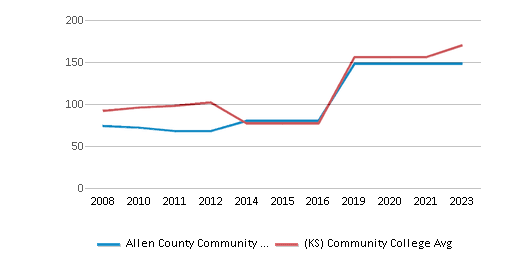
Student Body
The student population of Allen County Community College has grown by 25% over five years.
The student:teacher ratio of 20:1 has increased from 14:1 over five years.
The Allen County Community College diversity score of 0.44 is less than the state average of 0.60. The school's diversity has grown by 15% over five years.
Total Enrollment
3,031 students
1,908 students
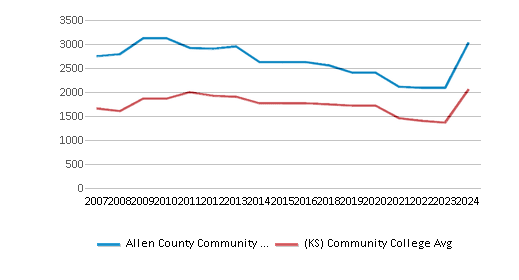
Student : Teacher Ratio
20:1
16:1
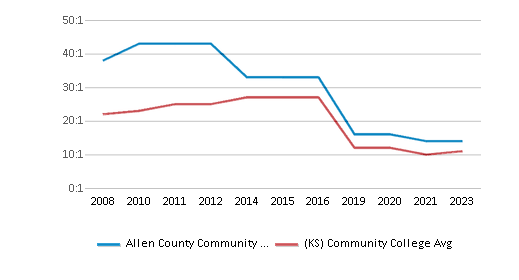
# Full-Time Students
929 students
606 students
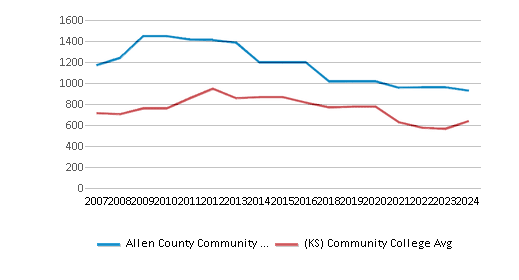
# Part-Time Students
2,102 students
1,451 students
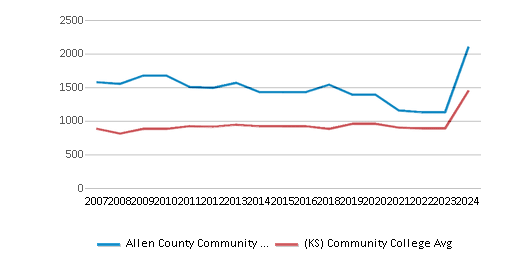
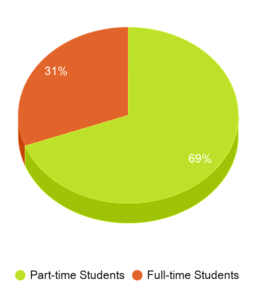
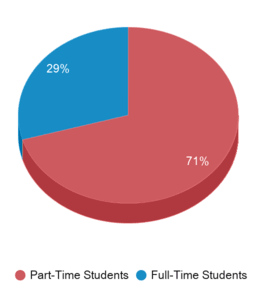
# Enrollment Undergraduate
303 students
231 students
# Full-Time Undergraduate Students
929 students
606 students
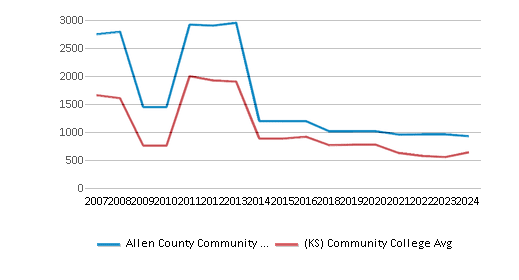
# Full-Time Graduate Students
n/a
11 students
# Part-Time Undergraduate Students
2,102 students
1,424 students
# Part-Time Graduate Students
n/a
5 students
Total Dormitory Capacity
264 students
342 students
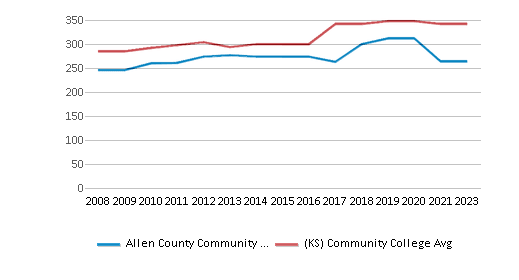
% American Indian/Alaskan
1%
1%
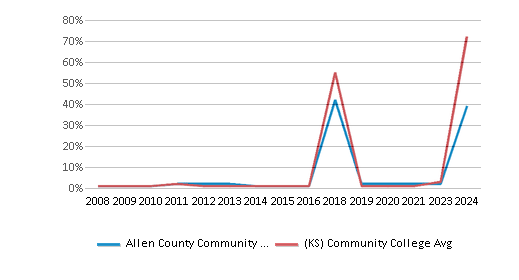
% Asian
3%
3%
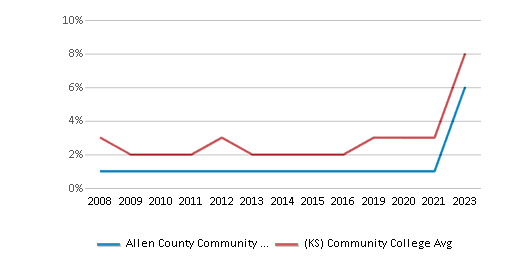
% Hispanic
7%
15%
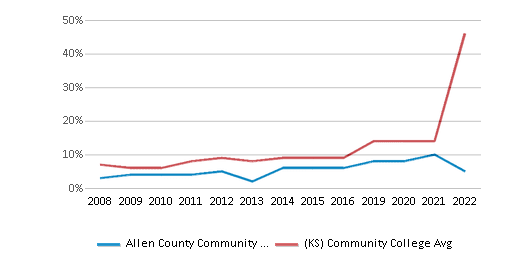
% Black
6%
8%
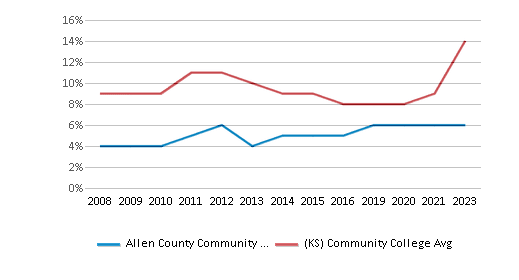
% White
74%
60%
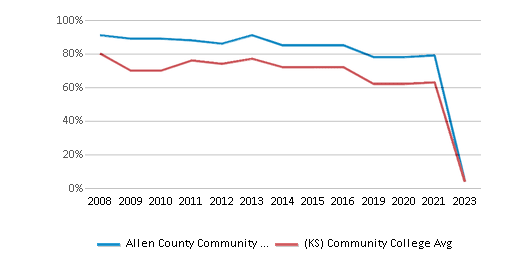
% Hawaiian
n/a
1%
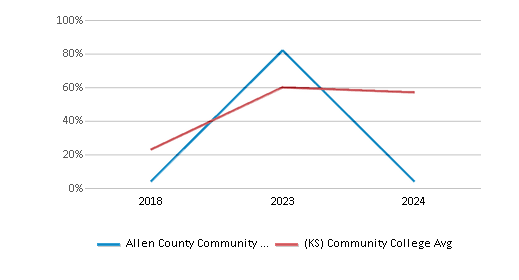
% Two or more races
4%
4%
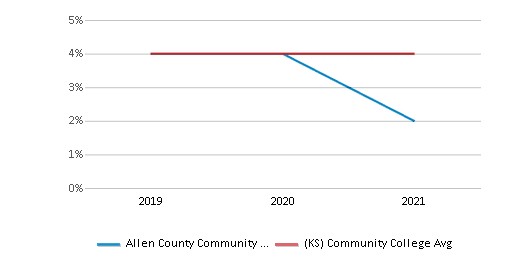
% Non Resident races
4%
2%
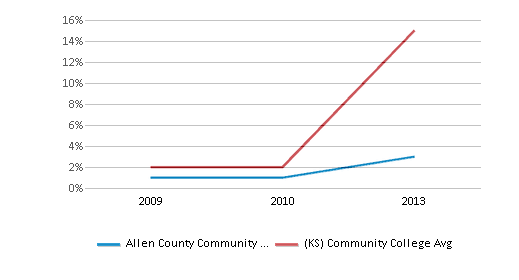
% Unknown races
1%
6%
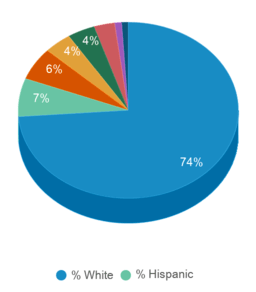
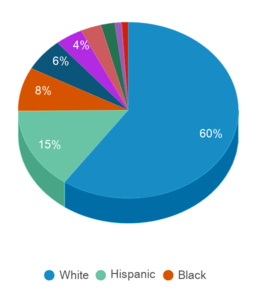
Diversity Score
0.44
0.60
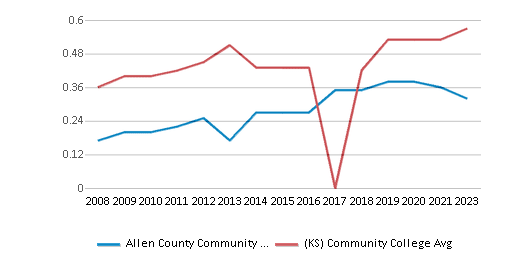
College Completion Rate (Students who graduate in less than 4 years)
0.3314%
0.4101%
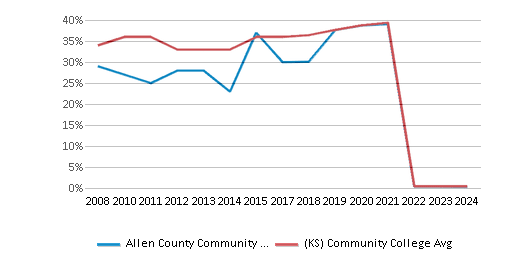
College Completion Rate (Students who graduate in 4 years or more than 4 years)
n/a
0.3056%
Average Graduate Earnings (10 Years)
$33,000
$34,000
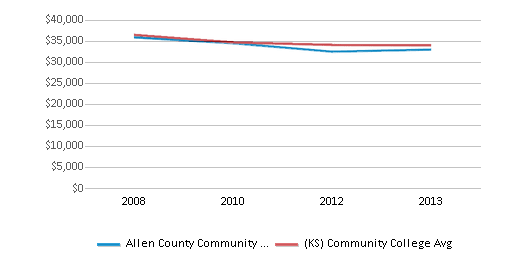
Tuition and Acceptance Rate
The public in-state tuition of $2,784 is less than the state average of $3,402. The in-state tuition has declined by 9% over four years.
The public out-state tuition of $2,784 is less than the state average of $4,296. The out-state tuition has declined by 9% over four years.
In-State Tuition Fees
$2,784
$3,402
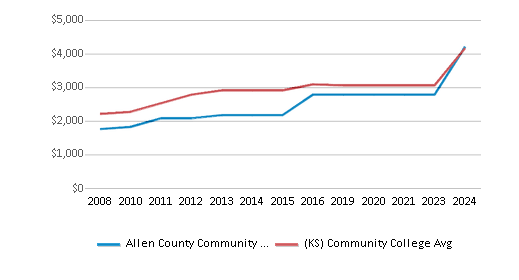
Out-State Tuition Fees
$2,784
$4,296
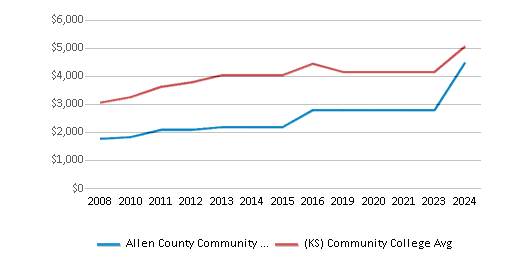
% Students Receiving Some Financial Aid
84%
90%
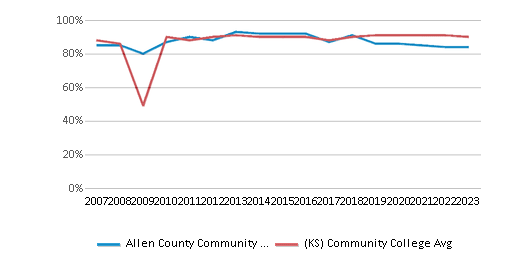
Median Debt for Graduates
$6,500
$8,892
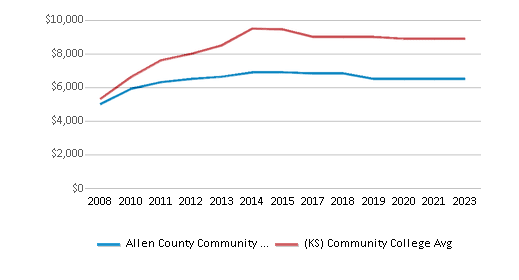
Median Debt for Dropouts
$4,500
$5,467
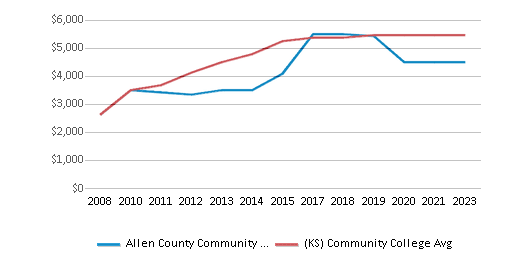
Acceptance Rate
n/a
100%
ACT Composite
n/a
21
Source: 2024 (or latest year available) Integrated Postsecondary Education Data System (IPEDS)
School Notes
- Allen County Community College is located at the north edge of Iola and has a modern campus which compliments the gently rolling hills of the Neosho River Valley. Iola, served by U.S. Highways 54 and 169, is within a two-hour drive of Kansas City, Wichita, and Topeka, as well as Joplin, Missouri, and Tulsa, Oklahoma. Since 1923, Allen County Community College has provided exceptional educational services to the citizens of Kansas. Quality and access have been primary concerns of the College from its beginning. The college now enrolls approximately 2,500 students each semester in the programs offered on the campuses in Iola and Burlingame, over Interactive Television, on the Internet, and at the outreach sites located within the six-county service area. ACCC will remain cognizant of the needs of its service area and responsive to those needs with new programs and services that can be implemented quickly, effectively, and efficiently. ACCC's quality comes in large part from its competent faculty who are dedicated to the art of teaching. Both those who are employed full-time at the College and those who teach on an adjunct basis are committed to their students and encourage excellence. Complementing the faculty are excellent student services and support staff who have committed themselves to the concepts of student success and service. Outstanding physical facilities are available on and off campus. The main campus provides one of the finest community college libraries in the state and an excellent instructional resource center, both of which are available to all students who take classes from the College. Modern equipment and teaching aids are available to all instructors and students at all of our sites.
Frequently Asked Questions
How much does Allen County Community College cost?
Allen County Community College's tuition is approximately $2,784 for In-State students and $2,784 for Out-State students.
What is Allen County Community College's ranking?
Allen County Community College ranks among the top 20% of community college in Kansas for: Least expensive tuition and Least debt for graduating students.
Recent Articles

Obtaining Your Bachelor's Degree at a Community College
Explore the evolving landscape of community colleges offering bachelor's degrees, addressing affordability, accessibility, and workforce needs.

A to Z of Community College Certificates and Courses
From business and healthcare to technology and skilled trades, the article showcases the breadth of options available to students seeking to enhance their knowledge, develop new skills, or pursue career advancement.

What is a Community College?
This comprehensive guide explains what a community college is, its history, and its role in higher education. It covers the types of programs offered, differences from four-year colleges, benefits of attending, and important considerations for prospective students, providing valuable insights for those exploring educational options.










